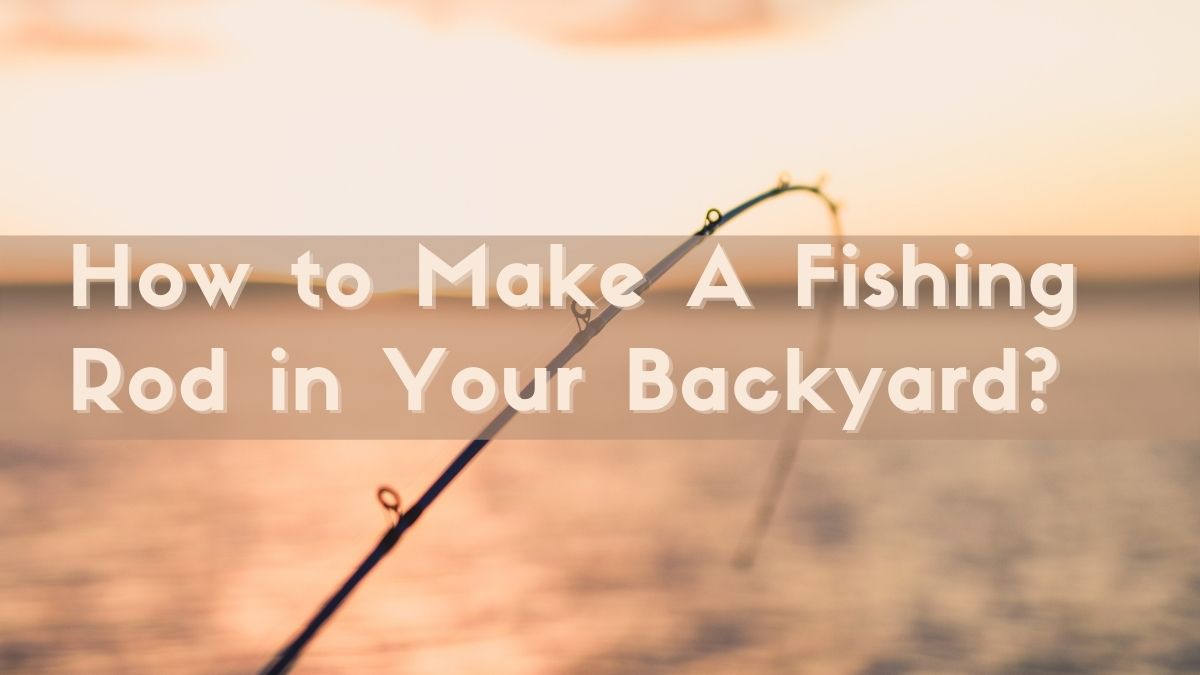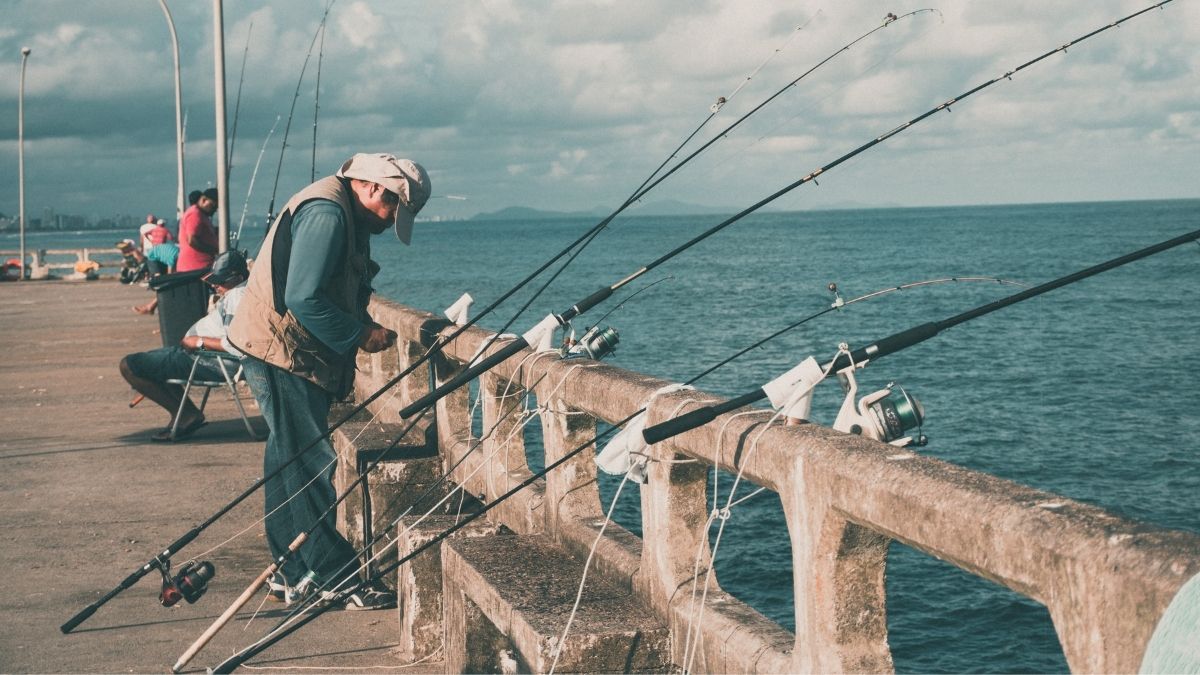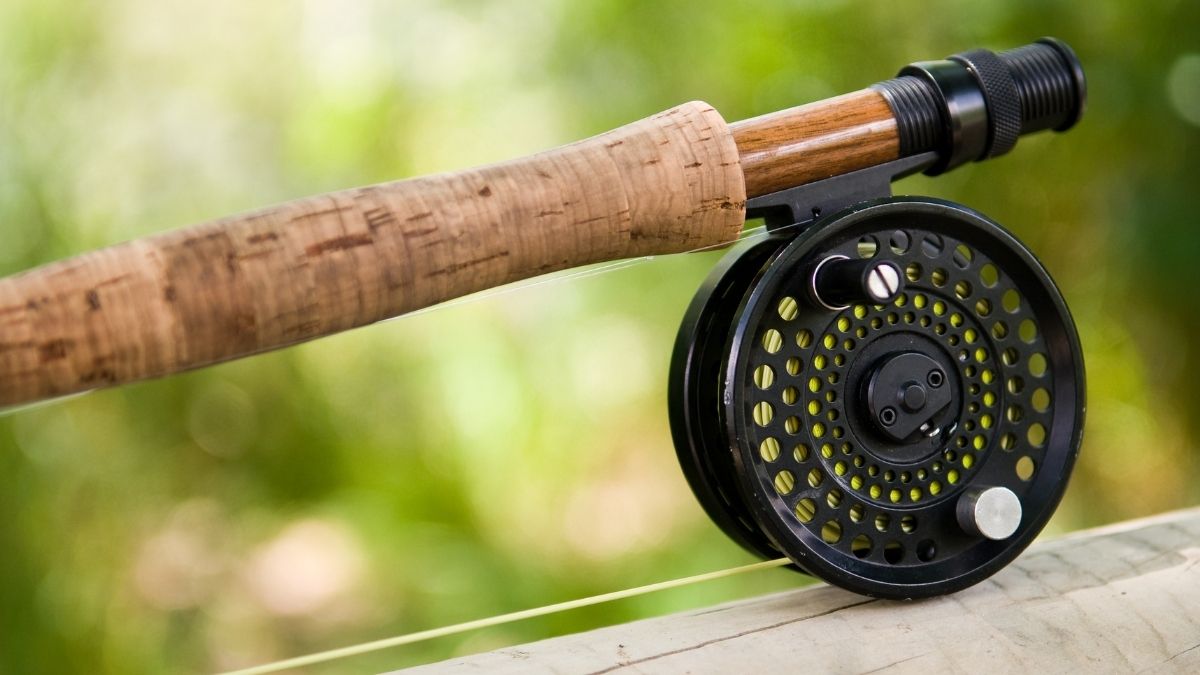Angling enthusiasts looking to elevate their bass fishing game will find invaluable insights in this DIY Guide: Crafting a Versatile Bass Fishing Rod for All Situations. Tailored to both novice and experienced fishermen, this guide provides a comprehensive look at the nuances of bass fishing rods, customization for peak performance, and techniques to thrive in every season. Whether you’re casting your line in the calm of summer or the chill of winter, this article will equip you with the knowledge to construct and maintain a rod that stands the test of time and the elements.
Key Takeaways
- Understanding rod action and length is crucial for adapting to different fishing conditions and techniques.
- Choosing the right materials, such as bamboo, fiberglass, or graphite, affects the rod’s flexibility, durability, and sensitivity.
- Selecting a compatible reel is essential for balancing the rod and enhancing overall performance.
- Customizing your rod with the appropriate components ensures versatility across various fishing environments and seasons.
- Regular maintenance and proper care extend the life of your DIY bass fishing rod, ensuring it remains a reliable tool for many fishing trips.
Understanding the Basics of Bass Fishing Rods


The Importance of Rod Action and Length
Selecting the right action and length for a bass fishing rod is crucial for optimizing performance and comfort. Rod action refers to how much of the rod bends when pressure is applied to the tip. A faster action means the rod bends mostly near the tip, while a slower action indicates bending closer to the butt of the rod. This characteristic is essential as it prevents losing line pressure on the lure, which is key to maintaining control during the fight with a bass.
When it comes to rod length, versatility is the name of the game. A 7-foot medium action spinning rod is often recommended for its ability to handle a variety of fishing techniques. However, for specific applications like spinnerbaits or jigs, a 6-foot-1 medium-heavy or a 7-foot-2 medium-heavy rod might be more suitable. Here’s a quick reference:
- Spinning Rods: 7-foot, medium action for general use
- Spinnerbaits/Topwaters/Buzzbaits: 6-foot-1, medium-heavy
- Jigs: 7-foot-2, medium-heavy for 3/8- and 1/2-ounce jigs
Comfort and style should guide your choice, but understanding the nuances of action and length can significantly enhance your fishing experience.
Remember, the right combination of action and length will not only improve your casting accuracy but also ensure better lure presentation and increased sensitivity to bites.
Materials: From Bamboo to Fiberglass and Graphite
When selecting the material for your bass fishing rod, it’s crucial to understand the unique properties each offers. Bamboo rods are revered for their classic feel and the artisan craftsmanship that goes into their creation. They are typically handcrafted, which can make them more expensive, but many anglers find their performance on the water to be unparalleled for certain fishing styles.
Fiberglass rods, on the other hand, are known for their durability and flexibility. They offer a moderate action that can be very forgiving for new anglers or those who enjoy a more relaxed casting experience. Modern fiberglass rods have seen improvements in weight and sensitivity, making them a viable option for those who prefer the feel of a slower action rod.
Graphite rods, also referred to as carbon fiber rods, are the go-to choice for many bass anglers due to their lightweight, sensitivity, and fast action. They can handle a wide range of lures and techniques, making them suitable for versatile fishing conditions. The Carbon Fiber 590, for example, is noted for its performance on longer targets, while options like the Fastglass 580 are better suited for closer ones.
Choosing the right material for your bass fishing rod is a balance between personal preference, the type of fishing you’ll be doing, and the performance characteristics you value most.
Reel Types and Their Impact on Rod Performance
The reel is an integral part of the bass fishing rod, directly influencing casting accuracy, retrieval speed, and overall balance. Choosing the right reel is crucial for optimizing rod performance and ensuring a successful fishing experience. There are several types of reels to consider, each with its own set of characteristics that can affect how the rod handles.
- Spinning reels are versatile and easy to use, making them a popular choice for beginners and experienced anglers alike. They work well with lighter lures and lines, providing smooth casting and retrieval.
- Baitcasting reels offer more precision and control, especially when using heavier lures and lines. They are preferred by many seasoned bass fishermen for their ability to handle larger fish and more complex techniques.
- Fly reels are designed for fly fishing and are matched with specialized rods. They allow for delicate presentations and are often used in conjunction with specific casting methods.
It’s important to match the reel to the rod’s action and power to maintain balance and maximize efficiency. A mismatched reel can lead to poor casting, reduced sensitivity, and increased fatigue during long fishing sessions. For more detailed information on reel types and their compatibility with different rods, refer to the Best Fishing Rods Team website page, which features common types of fishing reels, lures, and lines used by anglers.
Customizing Your Bass Fishing Rod
Choosing the Right Components for Versatility
When crafting a bass fishing rod that’s versatile enough for all situations, selecting the right components is crucial. The choice of rod blanks, guides, and reel seats will dictate the overall performance and adaptability of your rod. For instance, a medium-heavy rod with fast action is a good all-around choice, providing the sensitivity needed for light bites and the backbone for setting the hook firmly.
- Rod Blanks: Choose a length and power suitable for various techniques, from flipping to finesse.
- Guides: Silicon carbide (SiC) guides offer smooth casting and durability.
- Reel Seats: Ensure they are comfortable and provide a secure connection to the rod.
The components you select can make or break the versatility of your rod. It’s not just about the individual quality of each part, but how they come together to handle different fishing conditions and techniques.
Remember, the goal is to have a rod that can perform well whether you’re casting spinnerbaits with Colorado blades or finesse fishing with soft plastics. Mag Willow blades, for example, are known for their versatility and can be a great addition to your lure selection. By understanding the significance of each component, you’ll be well on your way to mastering the art of bass fishing with a rod that’s tailored to your needs.
Step-by-Step Guide to Assembling Your Rod
Assembling your own bass fishing rod can be a rewarding experience, offering a level of customization that’s not possible with off-the-shelf products. Begin by selecting a blank that suits your fishing style and the versatility you desire.
Follow these steps to assemble your rod:
- Secure the rod blank in a vise or holder to prevent it from moving.
- Attach the handle and reel seat, ensuring they are aligned with the spine of the blank.
- Space and affix the guides, starting from the tip and working towards the handle. Use a thread wrapping technique to secure them.
- Apply epoxy to the thread wraps for durability and let it cure as per the manufacturer’s instructions.
- Test the alignment of all components once more before the final setup.
Remember, patience and precision are key. Take your time with each step to ensure the best possible performance from your custom rod.
Once assembled, it’s crucial to balance the rod with the appropriate reel and line weight. This balance is essential for optimal casting and sensitivity. Experiment with different setups to find what works best for you in various fishing conditions.
Personalizing Your Rod for Comfort and Efficiency
Personalizing your bass fishing rod is crucial for achieving comfort and efficiency during long hours on the water. Selecting the right handle material and grip size is essential to ensure a firm yet comfortable hold. For instance, cork handles are popular for their light weight and warmth, while EVA foam provides excellent durability and grip in wet conditions.
Consider the balance of your rod as well. A well-balanced rod reduces fatigue and improves casting accuracy. You can adjust the balance by changing the weight distribution along the rod or by adding balancing weights.
To enhance your fishing experience, it’s worth investing in quality components like Fuji O+A Guide Rings, which offer smooth line flow and reduce friction.
Lastly, don’t overlook the importance of a rod’s aesthetic appeal. Customizing the color and finish of your rod not only makes it uniquely yours but can also boost your confidence and enjoyment on the water.
Techniques and Tips for All-Season Bass Fishing


Adapting Your Rod Setup for Different Seasons
As the seasons change, so do the conditions of the waters you fish in. Adapting your bass fishing rod setup for different seasons is essential to maintain a high level of success. In spring, for example, a versatile setup might include a medium-medium heavy, moderate-fast rod, ideally between 6’8" and 7’4" in length. This range offers the flexibility needed for the varied conditions of spring fishing.
When considering seasonal adaptations, it’s not just about the rod. The type of line, the knots you use, and the reel all play a significant role in how well you can respond to the changing environment.
Understanding the behavior of bass and the influence of water temperature, clarity, and available forage is key. Aligning your spinnerbait strategy with these factors can make a significant difference. Below is a list of considerations for each season:
- Spring: Focus on versatility with medium-heavy rods and moderate-fast action.
- Summer: Opt for lighter lines and faster actions to accommodate topwater fishing.
- Fall: Use heavier spinnerbaits and slower actions to mimic the slower movements of baitfish.
- Winter: Choose a stiffer rod with a slower action to handle the cold water’s effect on fish behavior.
Proven Lure Selection for Year-Round Success
Selecting the right lures is essential for bass fishing success in all seasons. Understanding the behavior of bass and the conditions of the water is key to choosing the most effective lures. For instance, during colder months, bass metabolism slows down, and they are less likely to chase fast-moving lures. In contrast, warmer temperatures see bass more active and willing to strike at aggressive presentations.
Seasonal strategies are not just about the type of lure, but also how you present them. A versatile approach involves having a range of lures that can be adapted to various conditions. For example, spinnerbaits are a popular choice because they can be effective year-round. They can be slow-rolled in cold water or burned across the surface in the heat of summer.
The key to year-round bass fishing success is to have a well-rounded lure selection that can adapt to changing conditions and bass behavior.
Here’s a simple list of lures to keep in your tackle box for all situations:
- Soft plastics for finesse presentations
- Crankbaits for depth and coverage
- Topwater lures for surface action
- Jigs for structure fishing
- Spinnerbaits for versatility
Remember, the best bass fishing lures are those that match the natural prey in the environment and can be presented in a way that entices bass, regardless of the season.
Advanced Casting Techniques for Various Conditions
Mastering advanced casting techniques can significantly enhance your bass fishing experience, especially when facing various environmental conditions. Proper casting can mean the difference between a good day and a great day on the water.
To improve your casting, consider the following tips:
- Practice makes perfect. Dedicate time to refine your casting technique, even when off the water.
- Pay attention to your body’s signals to prevent casting-related injuries. Incorporate exercises that strengthen your casting muscles.
- Experiment with different casting angles and distances. For example, making a fan cast can cover more water and increase your chances of a catch.
Remember, the key to successful casting is not just about distance, but also about accuracy and adaptability to the conditions at hand.
When fishing in colder months, such as January, it’s beneficial to vary your casting depth. Start shallow and progressively work your way deeper until your lure is crawling along the bottom. This methodical approach can help you locate and lure in those elusive monster bass.
Maintenance and Care for Your DIY Bass Rod


Routine Cleaning and Storage Tips
Proper maintenance of your bass fishing rod ensures its longevity and performance. Rinse after use: After fishing, it’s crucial to rinse the rod thoroughly with freshwater. This simple step helps to remove salt, dirt, and other debris that can corrode or damage the rod over time.
For storage, keep your rod in a cool, dry place away from direct sunlight to prevent any warping or weakening of the materials. If possible, hang the rod horizontally or store it in a rod sleeve to maintain its shape and protect it from dust and pests.
Regular inspection of your rod before and after use can prevent minor issues from becoming major problems. Look for signs of wear, such as cracks or loose fittings, and address them promptly.
Finally, when transporting your rod, use a sturdy tube or a specialized rod case. This will shield it from physical damage and environmental factors, ensuring that your DIY bass fishing rod is ready for your next adventure.
Repairing Common Issues with DIY Solutions
When it comes to maintaining your DIY bass fishing rod, being able to repair common issues can save you time and money. Knowing how to fix a broken rod tip is essential, as it’s a frequent problem that can occur on the water. For this repair, you’ll need a replacement tip-top, adhesive, and a fine file or sandpaper to smooth out any rough edges.
Here’s a quick guide to repairing your rod tip:
- Remove the damaged tip-top using pliers or by heating it gently if it’s glued on.
- Smooth the rod’s tip with a file or sandpaper to prepare the surface.
- Apply a small amount of adhesive to the rod tip and the new tip-top.
- Align the new tip-top with the guides and slide it onto the rod tip.
- Allow the adhesive to cure as per the manufacturer’s instructions before using the rod again.
For graphite rods, take extra care not to apply too much heat when removing the old tip-top, as it can damage the rod’s integrity. Always follow the adhesive’s curing time to ensure a strong bond.
In addition to tip repairs, it’s also useful to know how to handle other common issues such as removing burrs from guides or patching small cracks. Regular inspection and timely repairs will keep your rod in top condition for your next bass fishing adventure.
Longevity: Protecting Your Rod from Wear and Tear
Ensuring the longevity of your DIY bass fishing rod is crucial for a time-consuming but rewarding experience. Regular maintenance not only preserves the rod’s performance but also saves you money in the long run. Here are some essential tips to keep your rod in top condition:
- Store your rod properly: Avoid leaving your rod in extreme temperatures or direct sunlight for extended periods. Use a rod sleeve or case to protect it from dust and scratches.
- Clean after use: Rinse your rod with fresh water after each use, especially if you’ve been fishing in saltwater. Dry it thoroughly before storage.
- Inspect regularly: Check for any signs of wear, such as cracks in the blank or loose fittings, and address them promptly.
- Handle with care: Be mindful when assembling and disassembling your rod, as forcing pieces together or apart can cause damage.
By following these simple steps, you can significantly extend the life of your rod and ensure it remains a reliable tool for your bass fishing adventures.
Remember, the rod you’ve crafted is more than just a fishing tool; it’s a personalized extension of your angling passion. Treat it with respect, and it will serve you well for many seasons to come.
Conclusion: Crafting Your All-Purpose Bass Fishing Rod
In the world of bass fishing, versatility is key. Throughout this guide, we’ve explored the nuances of creating a bass fishing rod that can handle a variety of situations, ensuring you’re prepared for whatever the water throws your way. From selecting the right materials to understanding the subtleties of rod action and length, we’ve covered the essentials to help you craft a rod that’s not only effective but also a joy to use. Remember, the perfect rod is one that feels like an extension of your own intuition—balanced, responsive, and tailored to your fishing style. So take the leap, apply the knowledge from this guide, and build a bass fishing rod that will elevate your angling experiences to new heights. Tight lines and happy crafting!
Frequently Asked Questions
What are the key factors to consider when choosing the action and length of a bass fishing rod?
The key factors include the type of lures you plan to use, the fishing techniques you prefer, and the typical size of the bass in your fishing area. A versatile rod often has a medium to medium-heavy action and is around 7 feet in length, allowing for a good balance of sensitivity and power.
Can I use the same bass fishing rod for different seasons and weather conditions?
Yes, a versatile bass fishing rod can be adapted for different seasons by changing your lures, line, and technique. However, extreme conditions might require specific gear adjustments for optimal performance.
What is the advantage of customizing my own bass fishing rod?
Customizing your rod allows you to tailor it to your specific fishing style, comfort, and the specific conditions you often encounter, resulting in a more efficient and enjoyable fishing experience.
How often should I clean and maintain my DIY bass fishing rod?
It’s recommended to clean your rod after each use, especially if used in saltwater, to prevent corrosion. Periodic checks for wear and tear and proper storage will ensure longevity and consistent performance.
Are there any DIY solutions for common issues with bass fishing rods?
Yes, many common issues such as loose guides, damaged handles, or frayed lines can be fixed at home with basic tools and materials. Detailed guides and tutorials can be found online for specific repairs.
What components should I focus on to ensure my bass fishing rod is versatile for all situations?
Focus on a high-quality, sensitive blank, comfortable grips, durable guides, and a reliable reel seat. These components are crucial for creating a rod that can handle various lures, techniques, and conditions.





